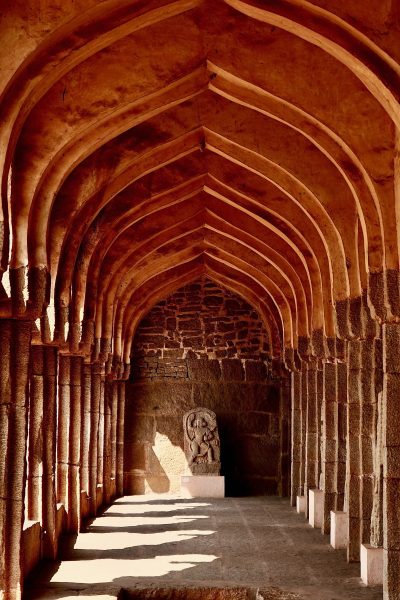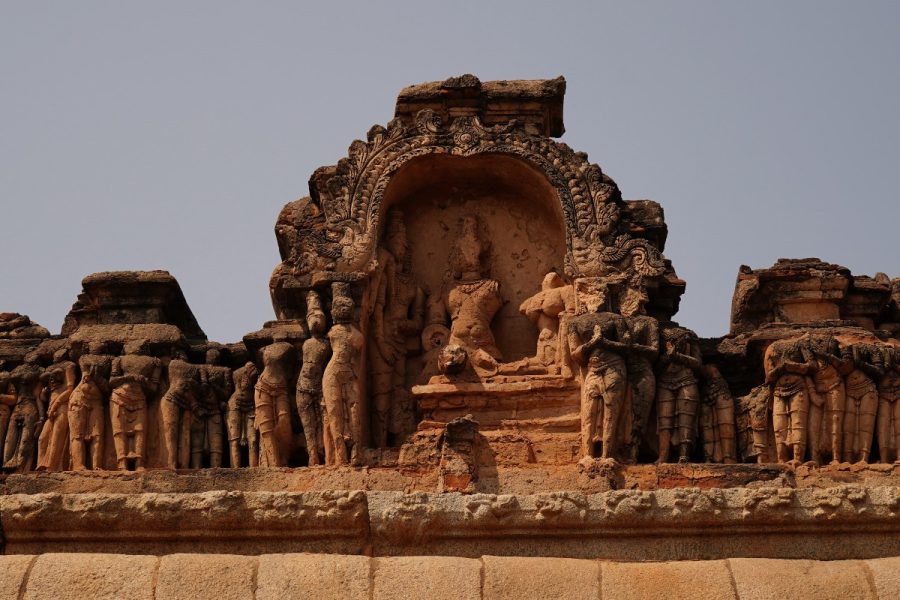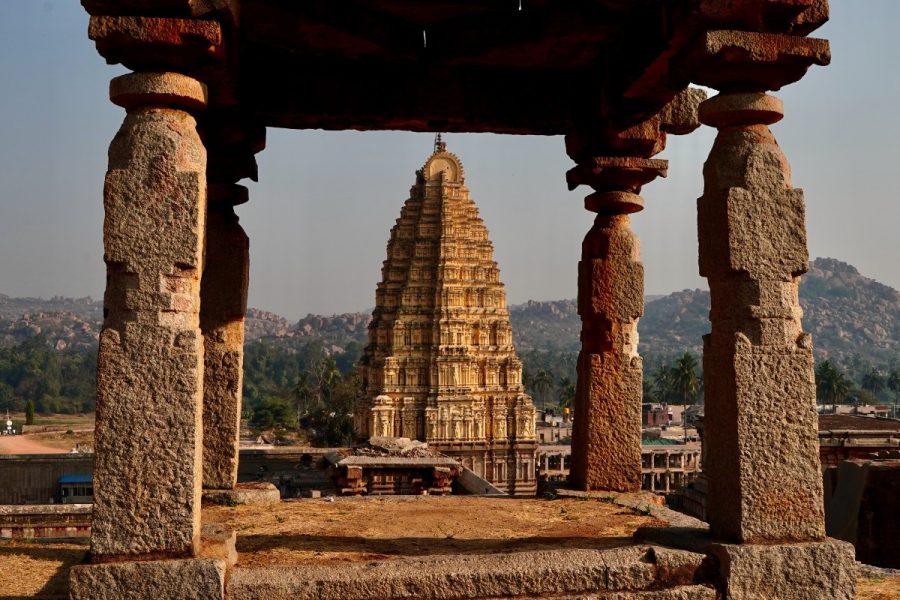
Where the stones speak to us: How Hampi conquered my mind and memory

Hampi is many things to many people. To me, it was history and Indian heritage and our philosophy of good karma — all mixed into the confluence of a great, glorious Dravidian kingdom. My photographs, shot during the prolonged spells of Covid-19, document the majestic architectural heritage of the Vijayanagara ruins at Hampi in Karnataka.
The seed of a photo exhibition, which was inaugurated in Delhi recently, was sown when I showed my work to Uma at her beautiful little home in South Delhi. Our conversation was accompanied by the intermittent chirrups of sparrows in her bougainvillea and bamboo plants. Over filter coffee, Uma told me that I had stepped into an ancient city discovered by a famous Scotsman, Colonel Colin Mackenzie, who had the eagle eye of a manuscript man.
Also read: Hampi – The enduring appeal of world’s largest city in 16th century
I told her that the beauty of Hampi, a UNESCO World Heritage Site, began from its most resplendent of temples, the Vittala temple. Fifty-six ornate, superbly carved monolithic pillars, dubbed as the musical pillars, dominate this temple. When tapped, each one emits different musical notes. Towards the east is the famous Stone Chariot, depicting an elephant pulling a chariot. A feat of exquisite engineering, its wheels actually rotate.

She told me that the House of Victory was built when Krishnadeva Raya came back from his victorious expedition against the King of Orissa is notable for its elaborate and elegant carvings. The kings of Vijayanagara witnessed the nine-day Dussehra festival from a grand throne in the House of Victory. The so-called King’s Balance is an unusual piece. Legend has it that the wealthy kings in the 15th century were weighed against grain or gold on the giant scale, which was later distributed to the poor. I was witness to the remnants in the ruins that spoke into the distance of eternity. She told me to imagine the delight of the Scotsman who was recording its beauty and history.
Also read: Encounter with vodka à la Rooskie: When two Russians went berserk
I felt it was dry. It is also far removed from the once fertile pastures of the erstwhile Vijayanagara Empire, but at every corner the stones speak to us. History says that the innovative irrigation methods helped achieve self-sufficiency in food. Numerous canals provided a perennial water supply to the narrow strip of fertile land bordering the Tungabhadra River. Many of these canals are still in use today though they have been modified to meet current requirements. The kingdom was ruled with the delight of its masters.

My hours at the Virupaksha temple and the interior brought me close to the gods that dwell in the darkness, the beauty of composition and contour, and the colour of old granite. I stood on a hill to capture the triangular ornate masterpiece framed within its four pilllars. In Hampi, every day and every hour, I was tasting the angularities of sunlight. The gods are happy to glint in the darkness and it seemed as if they were watching my every movement, my every breath. I felt I was in the midst of a magnificent mapping in which it is the sight that makes you feel really small and insignificant. I was grateful I could capture many moments in solitude.
But my mind was also on the elephant Laxmi that looked at me and seemed to be blessing me; my shutter clicked. I was overjoyed when Uma said we would create an auspicious beginning at Bikaner House, placing the two large prints of Laxmi at the entrance of the Main Gallery.

As each day passed, I knew I was covering years of destiny and design. I knew I was stepping into the haunts of history and faith. The abandoned boulders the gods carved on the stones, the twilight sun set on the facades each hour was a darshana of deep calm and a revelation of the beauty of the sound of silence. If the stones speak of another age, the trees stand like sanctuaries that catch the charm of life present and past. The frangipani seemed different against the blue sky and I learnt — once again — that light was the most powerful entity on earth.
For me, a trip to Hampi was like stepping into another world, discovering its many dimensions and its historicity. It took Uma six months to divide my photographs into chapters and her insights gave me the strength to know that my work was worthy of an exhibition. I became a photographer who learned every day and every night. Today, I give my work back to my country and know that this is only the beginning. Indian heritage has its chapters waiting to be unravelled to the world. As for Hampi, it conquered my mind my memory and became a milestone for me as a photographer.
Manoj Arora is a Delhi-based photographer. ‘Rediscover Hampi,’ an exhibition of his photographs of Hampi, was inaugurated in Delhi on September 13 and is on till September 22. Organised by Masha Art Gallery, it has been curated by Uma Nair.


